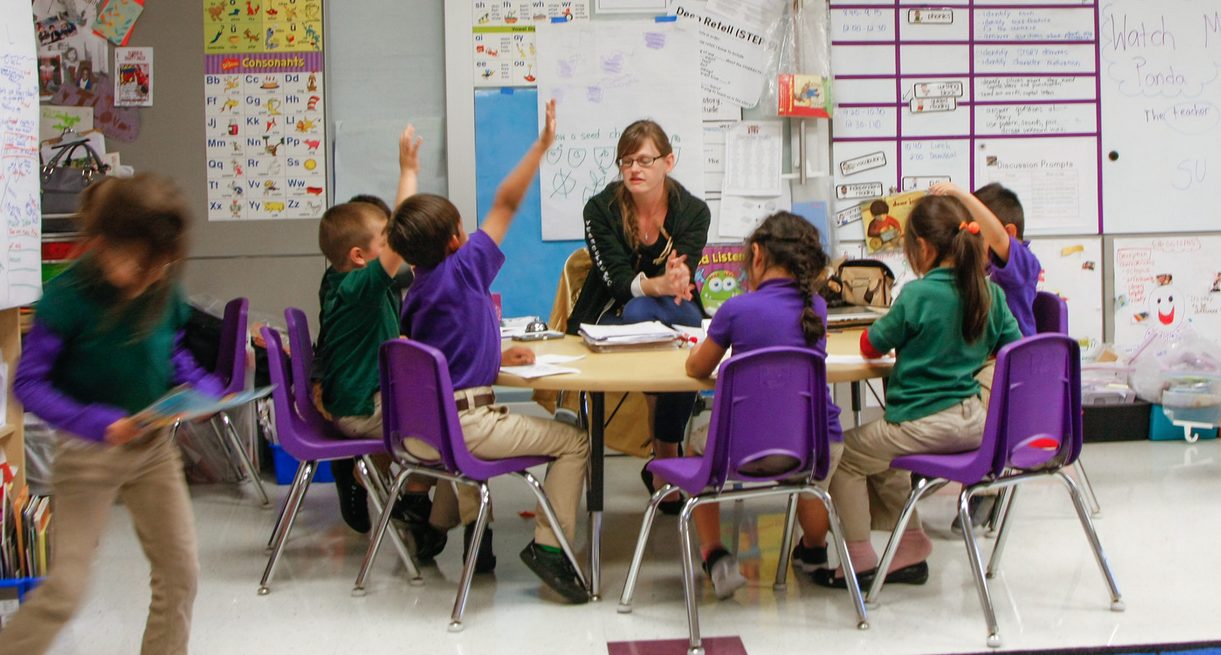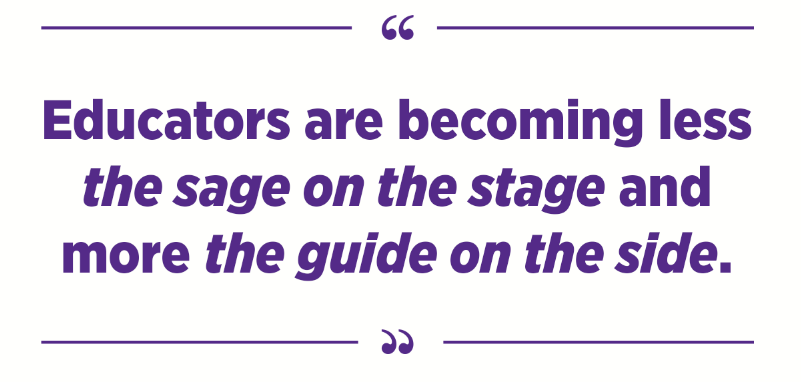
What is a Teacher’s Role in a Personalized Classroom?
by Stephen Pham, Teacher, Sí Se Puede Academy
As we progress towards increasingly personalized classrooms, the role of an educator is beginning to shift. Teachers still play many of the same roles as before, but as classroom dynamics change to become more student-centric, teachers will increasingly rely on their role as coach. As some say, educators are becoming less the sage on the stage and more the guide on the side.
I was fortunate to attend the recent NewSchools Venture Fund Summit, where I came away with the theme, among others, of the evolving roles of teachers and schools in educating our youth.  At the Summit, hundreds of people working in education and the reform thereof came together to connect, share new developments and inspire each other to continue pushing forward. As a practitioner, I explored and engaged in breakout sessions focused on teacher experiences, from which I learned about several shifts in our current systems.
At the Summit, hundreds of people working in education and the reform thereof came together to connect, share new developments and inspire each other to continue pushing forward. As a practitioner, I explored and engaged in breakout sessions focused on teacher experiences, from which I learned about several shifts in our current systems.
Students own their learning; teachers facilitate
This is an idea that I’ve echoed in several of my previous posts. In essence, classrooms are looking less like lecture-style rooms with all desks facing towards the teacher and more like collaborative spaces where learners can access the resources around them. Teachers spend less time sharing knowledge and content in hopes that students catch on, and more time encouraging students to reach their goals and supporting with the all-so-important human touch. As students take hold of their learning through a variety of modalities (small group instruction, project based learning, virtual online learning, etc.), educators can focus on helping students develop self-advocacy and grit, giving them the life skills they’ll need to succeed beyond their classroom and education.
Teachers are the pioneers and designers of personalized learning within their own classroom
Effective blended learning systems do not depend on the right software or hardware; rather, they depend on having the right teachers and designers. Around the country, both charter and traditional district schools are developing innovative models for personalized learning. Some are hiring expert consultants while others are relying on the old trial and error method. In every case, the schools produce their own valuable learnings, and each model is designed to match the needs of that respective classroom and community. Every case is different.
But at the core of each redesign, we find teachers need to develop the models and strategies, since they know their students most. Moreover, teachers need to embrace the skills of piloting structures, exploring different iterations and constantly redesigning to improve their systems. Essentially, teachers are the best pioneers at the forefront and thus must take efficient risks to find what works best in their classrooms.
System-wide changes will allow for effective personalized learning
In order to foster these evolutions in school models, various educational systems also need to adjust. Teacher preparation programs must offer training in blended learning strategies. Schools need to recruit ideal blended learning instructors, even perhaps targeting different types of players in an instructional team (logistics, content lead, executor, etc.). Entities within local governments – school boards and districts, teacher unions and local governments themselves – need to adapt funding to ensure technology is available for our students. We need to unite behind the common goal of figuring out what’s best for our students.
With the NewSchools Venture Fund, we see many charter schools and networks who are given the freedom to try what works best and, in effect, have revolutionized the way we can personalize education for all learners. With more and more innovative schools, we can challenge the conventional classroom and school systems, pressure various entities to keep up with educational reform and, in the end, give every student the education they deserve.
Follow Stephen on Twitter @stephenqpham.
Stephen is a fifth grade STEM teacher at Sí Se Puede Academy and a STEM Integration Associate for Rocketship’s network Achievement Team. Stephen is also a part of the BetterLesson Blended Learning Master Teacher Project. He grew up in Southern California and attended the University of California, Los Angeles where he studied biophysics. After graduating, Stephen joined Teach for America and has been teaching at Rocketship ever since, now going into his third year. In his practice, Stephen leverages a blended learning approach to teach math and science, getting students to apply their mathematical reasoning in a variety of ways. Stephen lives in San Francisco and enjoys spending time outdoors with friends.
Published on May 11, 2015
Read more stories about: Most Popular Stories, Personalized Learning.


